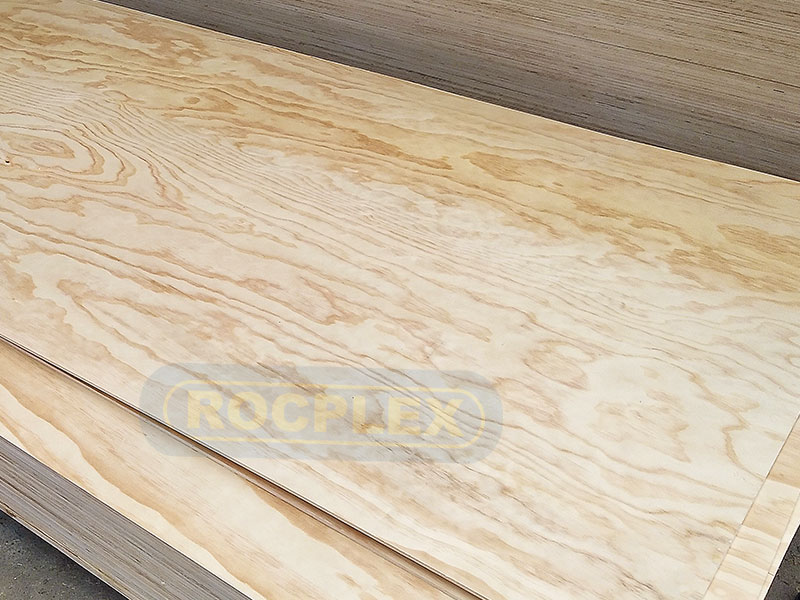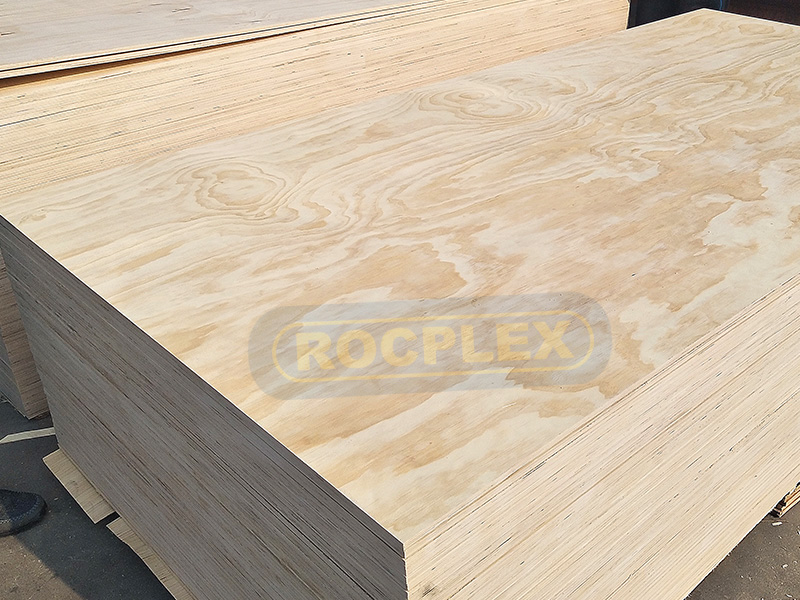What is Non Structural Plywood?
Non structural plywood is a type of plywood not intended for load-bearing or structural purposes. Unlike structural plywood, which must support weight and withstand various stresses, non structural plywood is primarily used for its aesthetic qualities and functionality in non-load-bearing applications. This type of plywood is commonly used in interior designs, furniture making, and decorative projects where visual appeal and finish are paramount. Non structural plywood is manufactured using softer wood species and lower-grade veneers, making it more cost-effective while still offering a wide range of uses. It is available in various thicknesses and sizes, catering to diverse project needs.
The Making of Non Structural Plywood
Materials and Construction
Non structural plywood is typically made from softer wood species such as pine or fir. The veneers used are of lower grade compared to structural plywood, allowing for more visible knots and imperfections. This does not detract from its suitability for decorative and interior applications. The construction involves layering these veneers with adhesives that do not need to meet the high standards of moisture and weather resistance required for structural plywood. This results in a product that is perfect for indoor use where exposure to harsh conditions is minimal.
Adhesive Types
The adhesives used in non structural plywood include B-Bond and C-Bond, both of which are based on urea-formaldehyde resins. These adhesives are sufficient for interior applications but are not suitable for exterior use due to their limited resistance to moisture and temperature changes. This makes non structural plywood an ideal choice for applications where strength and weather resistance are not critical.
Applications of Non Structural Plywood
Interior Plywood
Non structural plywood is widely used as interior plywood for various decorative and functional purposes. It is ideal for wall paneling, ceiling linings, and other interior fittings. The flexibility in design and ease of handling make it a preferred choice for interior designers and builders.
Furniture Plywood
Furniture plywood is another significant application of non structural plywood. Its versatility allows it to be used in making cabinets, shelves, tables, and other pieces of furniture. The ability to finish non structural plywood with veneers, laminates, or paint enhances its appeal for furniture making.
Benefits of Non Structural Plywood
Aesthetic Appeal
One of the main benefits of non structural plywood is its aesthetic appeal. The veneers used can be selected for their visual qualities, making this plywood suitable for applications where appearance is important. It can be finished in various ways to match different interior designs.
Cost-Effective
Non structural plywood is more cost-effective than structural plywood due to the use of lower-grade veneers and adhesives. This makes it an affordable option for projects that do not require the high strength and durability of structural plywood.
Versatility
The versatility of non structural plywood is another significant benefit. It can be used in a wide range of applications, from decorative panels to furniture and interior fittings. This makes it a valuable material for builders and designers looking for a reliable yet affordable solution.
Market and Availability
Cost Factors
The cost of non structural plywood is influenced by factors such as the type of wood used, the thickness of the sheets, and the supplier. Generally, it is less expensive than structural plywood, making it a budget-friendly choice for many projects.
Suppliers and Accessibility
Non structural plywood is readily available from various suppliers, including local lumberyards, specialized plywood suppliers, and online retailers. When sourcing non structural plywood, it is essential to ensure that it meets the specific requirements of the intended application.
Decorative Plywood Applications
Paneling Plywood
Non structural plywood, often referred to as paneling plywood, is an excellent choice for wall and ceiling panels. Its lightweight nature makes it easy to handle and install, while its aesthetic appeal can significantly enhance the visual aspects of interiors. Paneling plywood can be finished with various veneers or paints to match the desired décor, offering flexibility in design and application.
Craft Plywood
Craft plywood is another popular use of non structural plywood. Due to its ease of cutting and shaping, it is ideal for hobbyists and crafters. It is commonly used in model making, small furniture pieces, and decorative art projects. Craft plywood’s affordability and availability make it a favorite among DIY enthusiasts.
Quality and Standards
Grading of Non Structural Plywood
Non structural plywood comes in various grades, typically ranging from A to D. Grade A plywood has the best appearance with minimal imperfections, making it suitable for applications where aesthetics are important. Lower grades, such as C and D, may have more visible defects but are still useful for projects where the finish is not critical.
Certification and Compliance
While non structural plywood does not require the same stringent certifications as structural plywood, it is still essential to ensure it meets basic quality standards. This includes checking for compliance with industry norms regarding adhesive quality and veneer grades. Proper certification ensures the plywood is safe and suitable for its intended use.
Innovations and Trends
Eco-Friendly Options
Recent advancements have led to the development of more eco-friendly non structural ply options. These include the use of sustainable wood sources and low-emission adhesives. Eco-friendly plywood reduces the environmental impact and provides a greener choice for consumers looking to minimize their carbon footprint.
Enhanced Finishes
Innovations in finishes and coatings have significantly improved the durability and appearance of non structural plywood. Advanced laminates and veneers offer better resistance to wear and tear while providing a high-quality finish. These enhancements make non structural plywood even more versatile and appealing for various decorative applications.
Installation and Maintenance Tips
Proper Installation Techniques
For optimal results, non structural plywood should be installed using appropriate techniques. This includes ensuring a level and clean surface for installation and using the right type of adhesive or fasteners. Proper installation not only enhances the appearance but also extends the lifespan of the plywood.
Maintenance Practices
Maintaining non structural plywood involves regular cleaning and occasional re-finishing to keep it looking its best. Avoiding excessive moisture and ensuring proper ventilation in areas where the plywood is installed can prevent damage and prolong its durability. Applying protective coatings can also enhance its resistance to scratches and other wear.
Non Structural Plywood Versatile Uses and Benefits
Non structural plywood proves to be a versatile and cost-effective material for a wide range of decorative and functional applications. Its ease of use, aesthetic appeal, and affordability make it a preferred choice for interior designers, builders, and DIY enthusiasts alike. As innovations continue to improve its quality and eco-friendliness, non-structural ply will remain a vital material in the construction and decoration industries.
FAQs about Non Structural Plywood
What is non structural plywood used for?
Non structural plywood is used for decorative and functional purposes, such as wall paneling, furniture making, and craft projects. It is not designed for load-bearing applications.
How does non structural plywood differ from structural plywood?
Non structural plywood is made with lower-grade veneers and adhesives, making it suitable for indoor use and decorative applications. Structural plywood is designed to support weight and withstand environmental stresses.
Can non structural plywood be used outdoors?
No, non structural plywood is not suitable for outdoor use as it lacks the moisture resistance and durability required for exterior applications.
What types of wood are used in non structural plywood?
Softer wood species like pine and fir are commonly used in non structural ply. These woods are selected for their cost-effectiveness and ease of handling.
Where can I buy non structural plywood?
Non structural ply can be purchased from local lumberyards, specialized plywood suppliers, and online retailers. Ensure it meets the necessary quality standards for your specific project.
Post time: Jul-20-2024




